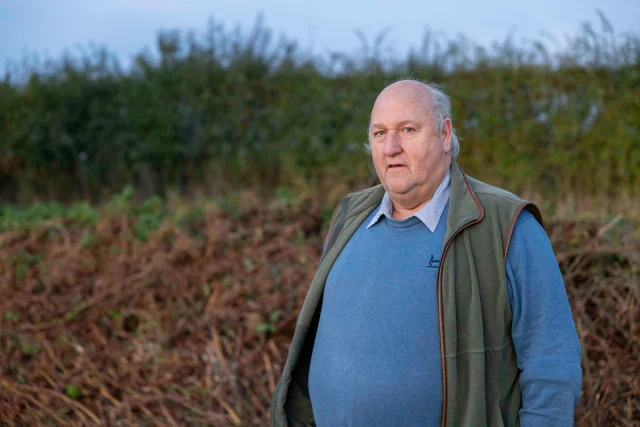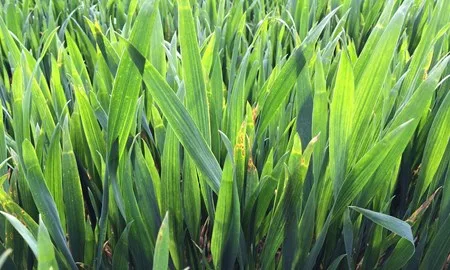Published on 10th March 2020
Disease Management
Crop sprayer types explained: Mounted, trailed & self-propelled

Picking the most suitable sprayer type for a farm’s crop protection regime isn’t always straightforward.
Farmers and contractors often have favourites, be it mounted, trailed or self-propelled. However, the options and configurations for each format make the decision more complex.
For example, mounted machines have traditionally been the entry-level option, ideal for smaller areas. But with some large front-and-rear units offering capacities approaching 4,000-litres, they can now cover serious acreages.
Trailed and self-propelled machines also come in various sizes and specifications, with smaller units at around 2,000-litres and the largest capable of holding 12,000-litres or more.
Despite these crossovers, the pros and cons of each setup remain unchanged.
Mounted sprayers are generally more cost-effective and once setup are fairly manoeuvrable. However, mounting and dismounting can be tedious (particularly with a front tank), carrying capacity is limited and ground clearance is governed by the tractor’s pick-up hitch height.
Trailed setups suffer the same ground clearance issues, but benefit from easier hitching and a range of sizes. But they cost more, can be tricky to reverse into corners, and the extra axle can make them a handful in wet conditions.
Both options also rely on having spare tractor capacity to operate them.
Self-propelled models offer the best of both worlds, with top-end technology and excellent manoeuvrability and weight distribution.
But, they are more expensive, have higher maintenance costs and lack the flexibility of additional tractor power outside the spraying season.
Below, three seasoned sprayer operators explain their favoured choices.
3 types of sprayers
Nat Bacon – Ward Farming, Suffolk

Ward Farming runs a 900 ha arable and veg enterprise and a 3,800-litre Landquip mounted sprayer forms a key part of its crop protection strategy.
Most spraying and liquid fertiliser application is done with a 4,000-litre Bateman RB35 self-propelled machine. But during the peak spraying months of May to July it’s unable to cope with the workload and the mounted outfit assists.
Director Nat Bacon says a mounted setup was most sensible for this type and amount of work. Another self-propelled was unnecessary and trailed units were more expensive than a similar capacity mounted sprayer.
Additionally, mounted machines offer better manoeuvrability, which is particularly important in some smaller root-crop fields, he says.
With a pair of 1,900-litre tanks front and rear the 24m Landquip Cropmaster’s capacity rivals the Bateman, and when mounted on a Fendt 724, gives a smooth and stable ride.
Low ground clearance is one downside, but does not cause problems because the machine spends most time sprayingonions.
The biggest limiting factor is the front and rear tanks have to be mixed separately, says Mr Bacon. “Although you put the same amount of chemical in, there is twice as much measuring out.”
It is also fiddly to get on and off, particularly the pipework linking front and back tanks, which must be mounted carefully to avoid damaging the tractor’s paintwork, he notes.
Mounted sprayers: Pros and cons
Best for:
Price
Low maintenance
Good manoeuvrability
Worst for:
Carrying capacity
Putting on and taking off
Ground clearance
Graham Hayllar – Appleby-in-Westmorland, Cumbria

Graham Hayllar runs a grassland-based contracting business and is a long-standing fan of trailed sprayers.
That is mainly because he needs to carry large water volumes for spraying thistles and docks and would need a substantial front-and-rear mounted setup for comparable capacity.
Also, the changing nature of his work means the sprayer is constantly being put on and taken off, and swapped between tractors.
“It takes about five minutes for us to hook-up our trailed machine and we’ve even got universal brackets in all tractors so the controller can be swapped quickly.”
His Case TS3600, based on a Gem design, has a 3,600-litre tank and 24m booms. It does all 1,400 ha of contract spraying and spends much time working on grassland, often tackling steep slopes and rough terrain.
It performs well as the tractor gives good traction, and the steering drawbar shifts the centre of gravity uphill to improve stability.
“We looked at self-propelled machines, but most leggy hydrostatic models wouldn’t be suitable for this ground,” says Mr Hayllar.
“A Multidrive would be the best option, but would be more expensive to buy and run than our trailed machine.”
Because Mr Hayllar does little arable work, ground clearance is not a concern. Neither is manoeuvrability as he’s not having to turn into and reverse along tramlines.
Trailed sprayers: Pros and cons
Best for:
Quick to put on and off
High capacity
Low maintenance
Worst for:
Manoeuvrability
Wet conditions
Ground clearance
WH Gittins – Wykey Farm, Shropshire

Simon Gittins runs a 1,200 ha arable operation and anaerobic digestion plant and has just moved from a 6,000-litre trailed sprayer to a Sands self-propelled machine.
He found the trailed machine awkward to operate, particularly in small fields. Having three axles and six sets of wheels running through the field also made it liable to getting stuck in wet conditions.
Furthermore, the ground clearance, limited by the tractor’s pick-up hitch, was quite low, and being such a big sprayer, it tied up one frontline tractor.
During peak season, that left the farm down on tractor power and if the sprayer was to be replaced with another trailed machine, an additional 200hp tractor would be needed, sprayer operator Steven Forbes says.
“Simon did the sums and the price of another 200hp tractor and 6,000-litre trailed sprayer was similar to a self-propelled.
“I see where a trailed would be beneficial, but for us there’s enough work to justify the self-propelled.”
Mr Forbes tried several machines at the National Sprayer Demo day, before settling on a 6,000-litre Sands Horizon with 36m booms.
Using a self-propelled massively improved manoeuvrability, and the lower weight and better weight distribution made a significant difference in the wet.
Self-propelled sprayers: Pros and cons
Best for:
Ready to operate
High capacity
Good ground clearance
Worst for:
Higher purchase cost
More maintenance
Lacks versatility



